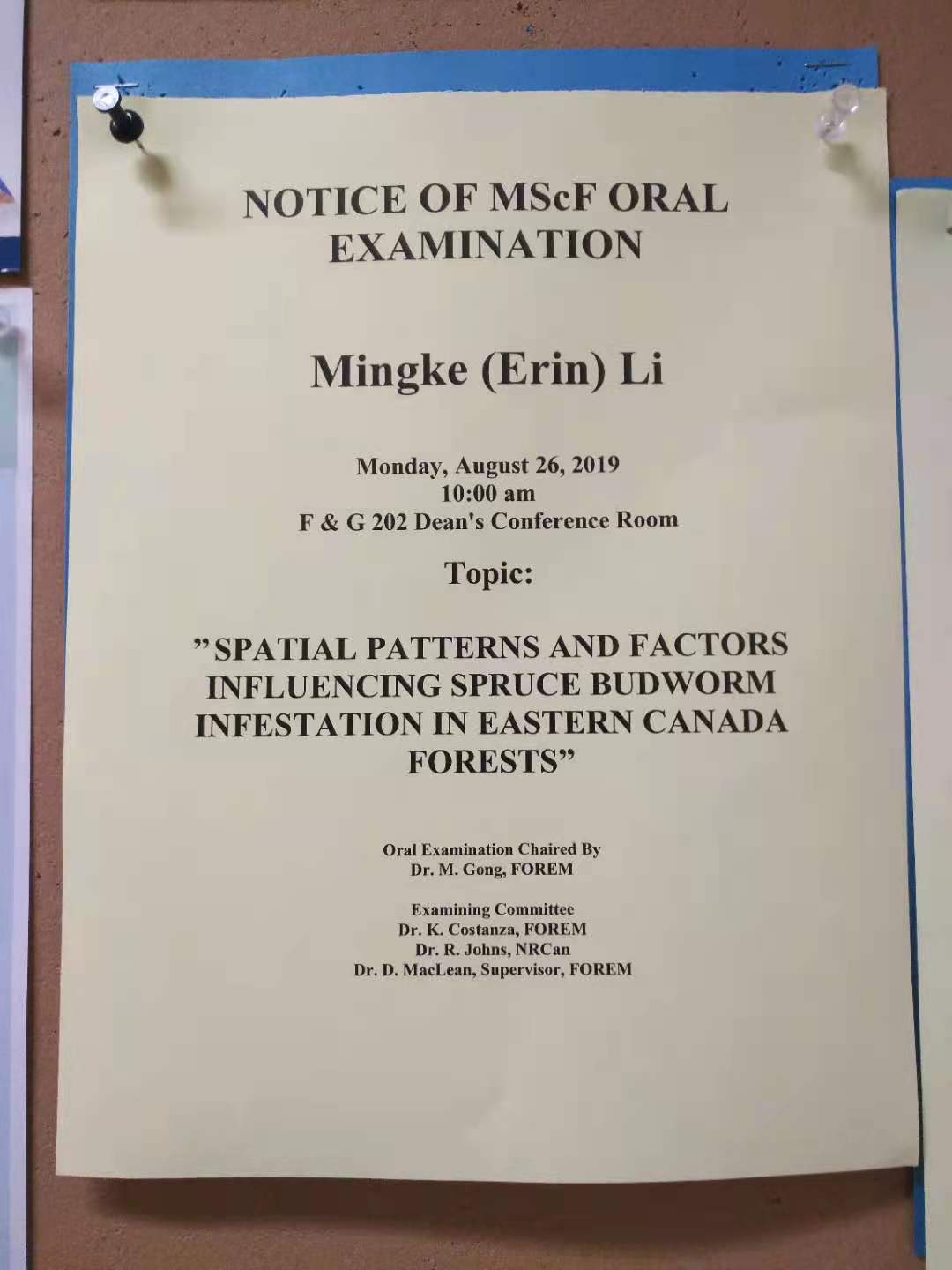
This thesis explored the spatial dynamics of spruce budworm infestation in eastern Canada forests, focusing on population trends in northern New Brunswick and defoliation patterns in Québec. Through spatial modeling and statistical analysis, the work provided practical insights into outbreak prediction and management strategies.
Title
Spatial patterns and factors influencing spruce budworm infestation in eastern Canada forests
Degree
Master of Science in Forestry
Academic Unit
Forestry and Environmental Management, University of New Brunswick
Abstract
A spruce budworm (Choristoneura fumiferana Clem.; SBW) outbreak in Québec spread southward into New Brunswick in 2014. This thesis used spatial analyses of five years of SBW population data in northern New Brunswick and tree defoliation data in Québec to examine spatial patterns and factors influencing SBW infestation. Local previous-year SBW population level, proximity to outbreak hot spots, and April degree days were important in predicting SBW population levels in New Brunswick, although relationships were inconsistent across years. Models incorporating spatial structures explained between 68 and 79 percent of the annual variance and performed better than non-spatial models. A combined-year model with R squared value of 0.53 consistently underestimated upcoming-year populations. Defoliation patterns quantified in 57 plots in Québec were clustered in 28 to 47 percent of cases, which showed higher plot-level defoliation and greater deviations. Plot-level defoliation and basal area explained 80 percent of the variance in individual-tree defoliation. The thesis contributed to more efficient sampling allocation and more effective insecticide treatment targeting.
Click to see the full thesis